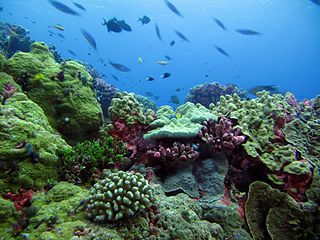
A national park is a nature park designated for conservation purposes because of unparalleled national natural, historic, or cultural significance. It is an area of natural, semi-natural, or developed land that is protected and owned by a government. Although governments hold different standards for national park designation, the conservation of 'wild nature' for posterity and as a symbol of national pride is a common motivation for the continued protection of all national parks around the world. National parks are almost always accessible to the public. Usually national parks are developed, owned and managed by national governments, though in some countries with federal or devolved forms of government, "national parks" may be the responsibility of subnational, regional, or local authorities.

Protected areas or conservation areas are locations which receive protection because of their recognized natural or cultural values. Protected areas are those areas in which human presence or the exploitation of natural resources is limited.

The International Union for Conservation of Nature (IUCN) is an international organization working in the field of nature conservation and sustainable use of natural resources. Founded in 1948, IUCN has become the global authority on the status of the natural world and the measures needed to safeguard it. It is involved in data gathering and analysis, research, field projects, advocacy, and education. IUCN's mission is to "influence, encourage and assist societies throughout the world to conserve nature and to ensure that any use of natural resources is equitable and ecologically sustainable".

Wilderness or wildlands are Earth's natural environments that have not been significantly modified by human activity, or any nonurbanized land not under extensive agricultural cultivation. The term has traditionally referred to terrestrial environments, though growing attention is being placed on marine wilderness. Recent maps of wilderness suggest it covers roughly one-quarter of Earth's terrestrial surface, but is being rapidly degraded by human activity. Even less wilderness remains in the ocean, with only 13.2% free from intense human activity.
The conservation status of a group of organisms indicates whether the group still exists and how likely the group is to become extinct in the near future. Many factors are taken into account when assessing conservation status: not simply the number of individuals remaining, but the overall increase or decrease in the population over time, breeding success rates, and known threats. Various systems of conservation status are in use at international, multi-country, national and local levels, as well as for consumer use such as sustainable seafood advisory lists and certification. The two international systems are by the International Union for Conservation of Nature (IUCN) and The Convention on International Trade in Endangered Species of Wild Fauna and Flora (CITES).

There are four categories of protected areas in India, constituted under the Wildlife Protection Act, 1972. Tiger reserves consist of areas under national parks and wildlife sanctuaries. There are 53 tiger reserves in India. As of January 2023, the protected areas of India cover 173,629.52 square kilometres (67,038.73 sq mi), roughly 5.28% of the total geographical area of the country.
The UN Environment Programme World Conservation Monitoring Centre (UNEP-WCMC) is the specialist biodiversity centre of UN Environment Programme, based in Cambridge in the United Kingdom. UNEP-WCMC has been part of UN Environment Programme since 2000 and has responsibility for biodiversity assessment and support to policy development and implementation. The "World Conservation Monitoring Centre" was previously an independent organisation jointly managed by IUCN, UN Environment Programme and WWF established in 1988. Before that, the centre was a part of the IUCN Secretariat.

A natural monument is a natural or cultural feature of outstanding or unique value because of its inherent rarity, representative of aesthetic qualities, or cultural significance. They can be natural geological and geographical features such as waterfalls, cliffs, craters, fossil, sand dunes, rock forms, valleys and coral reefs. Locations important to faith groups may be considered natural monuments. Archeological and historical sites linked to the natural environment are also included, such as cave art. This is especially true when relevant to the land of Indigenous Peoples.

The World Commission on Protected Areas (WCPA) is one of six commissions of the International Union for Conservation of Nature (IUCN).
Danggali Conservation Park is a protected area located about 65 kilometres north of Renmark in South Australia. The conservation park was proclaimed under the National Parks and Wildlife Act 1972 in 1976. In 2009, a portion of the conservation park was excised to create the Danggali Wilderness Protection Area. The conservation park is classified as an IUCN Category Ia protected area.

The World Database on Protected Areas (WDPA) is the largest assembly of data on the world's terrestrial and marine protected areas, containing more than 260,000 protected areas as of August 2020, with records covering 245 countries and territories throughout the world. The WDPA is a joint venture between the United Nations Environment Programme World Conservation Monitoring Centre and the International Union for Conservation of Nature World Commission on Protected Areas.

As of present, there are around 400 protected areas in Pakistan that are recognized by IUCN. The total protected land area represents 13% of Pakistan's landmass as of 2020, The Government of Pakistan plans to increase it to at least 15% by 2023. As a signatory of the UN Convention on Biological Diversity, Pakistan is committed to expanding its protected areas to encompass 17% of its total territory by the year 2030. This ambitious goal aims to ensure the long-term conservation of nature, safeguard vital ecosystem services, and preserve the cultural values associated with these protected areas.

IUCN protected area categories, or IUCN protected area management categories, are categories used to classify protected areas in a system developed by the International Union for Conservation of Nature (IUCN).

Lathami Conservation Park is a protected area in the Australian state of South Australia on the north coast of Kangaroo Island located in the locality of Cassini about 1 kilometre east of Stokes Bay and about 17 kilometres north of Parndana. It was proclaimed on 1 October 1987 to protect important nesting and foraging habitat for the Glossy Black Cockatoo, after which the conservation park was named.
Beyeria Conservation Park is a protected area in the Australian state of South Australia located on Kangaroo Island in the gazetted locality of Haines, about 16 kilometres south of Kingscote on the northern edge of the MacGillivray Plain.

Yumbarra Conservation Park, formerly the Yumbarra National Park, is a protected area in the Australian state of South Australia located about 55 kilometres north of the town centre of Ceduna.
Baudin Conservation Park is a protected area located on the north coast of Dudley Peninsula on Kangaroo Island in South Australia about 2 kilometres south east of Penneshaw. It was proclaimed under the National Parks and Wildlife Act 1972 in 2002. The conservation park is classified as an IUCN Category III protected area.
Venus Bay Conservation Park is a protected area located on the west coast of Eyre Peninsula in South Australia immediately west of the town of Venus Bay. It consists of land on the Weyland Peninsula on the south side of Venus Bay, land on the north west side of the bay to the west of the town of Port Kenny and the seven islands located within the bay. The conservation park was originally proclaimed to protect ‘important feeding and breeding grounds for many native birds’. The conservation park is classified as an IUCN Category VI protected area.
Wahgunyah Conservation Park is a protected area located on the west coast of South Australia about 20 kilometres west of the town of Fowlers Bay. The conservation park is classified as an IUCN Category VI protected area.

Bakara Conservation Park is a protected area of mallee scrub in the Murray Mallee region of South Australia. It is located in the locality of Maggea on the southern side of the Stott Highway.












